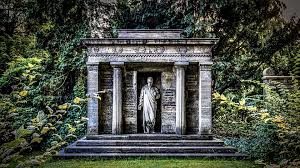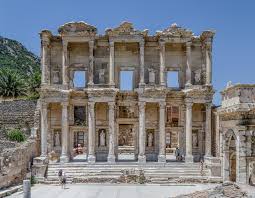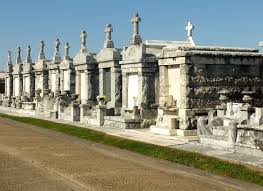For the Roman Funerals were very important. They believed that giving the deceased proper honor and burial was important for their afterlife. They also believed that the dead, living in their tombs, could affect the fortunes of the living.

According to the Romans, the dead were taken across the mythological river Styx to the underworld, where it was decided whether the soul should go to heaven or hell.
Ancient Roman Funerals
Hence for the Romans, the funerals were an elaborate affair following many rituals and customs because they believed that if the deceased were not given proper funeral, their souls would wander along the river Styx for hundred years before they were allowed to cross it.
Ancient Rome Death
A typical funeral consisted of many steps. When the deceased was at the point of death, the nearest relative would attempt to catch the last breath with his mouth because it was believed that the soul escapes from the mouth. After that, the eyes and the mouth were closed by the nearest relation.

The body was then washed, perfumed and dressed in rich robes. Coins would be placed under the tongue or over the eye of the deceased, for they believed that the dead have to pay a fee to the underworld ferryman Charon to be able to cross the river Styx. After the body was prepared, it was placed in the atrium of the family home, with the feet pointed towards the door.
Those in mourning wore dark woolen clothes and neglected to bathe, wash, cut their nails, etc.
Death and Burial in the Roman world
According to the Romans, the dead polluted the living. The twelve tables, the code of law for the Romans, forbade burials and cremations inside the city walls. Hence these were done outside the city. The journey from the home of the deceased to the burial site or cemetery was done in the form of an elaborate procession.

The Roman Funerals of the Romans generally occurred under torchlight in the night. The corpse was carried with the feet forward by the nearest friends and relatives. Leading the procession were musicians playing songs or poems expressing grief. They were followed by female mourners called Praeficae who sang funeral dirges. After that came the body with its face covered followed by family and friends in mourning garb.
Ancient Roman Eulogy
The Romans generally cremated their dead even though burial was also done. Cremation was prevalent until the third century after which burial became more popular. At the burial or cremation site, a Laudatio Funebris or eulogy was conducted in which the deceased was praised.
Where were Romans usually buried and why
At the cemetery, a sacrifice was also performed in the presence of the corpse. During the burning of the pyre, things agreeable to the deceased like food, clothes, etc were thrown into the flames. After that followed the ‘nine days of mourning’, at the end of which funeral feasts and rites called novendial-is or Novemdialis were held.

In February, which was the last month of the original Roman calendar, the deceased were celebrated in the nine-day long festival called Parentalia. during which they offered food to their ancestors.
The poor Romans usually belonged to some of the other funeral societies called Collegia Funeral to ensure proper funeral to their deceased.The members made regular payments to the societies which would cover the cost of funerals for its members.
More info on- Roman tombs, masks




